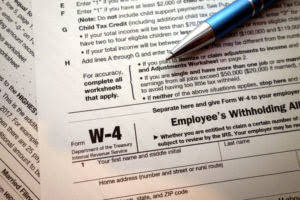
During the year, if XYZ produces a table that requires 4 direct labor hours, $40 ($10 per hour x 4 hours) of overhead costs would be allocated to that table. The overhead rate helps businesses understand the proportion of indirect costs relative to direct costs. It can be used to allocate overhead when calculating product costs and profits. One of the advantages of predetermined overhead rate is that it can help businesses monitor overhead rate. A business can calculate its actual costs periodically and then compare that to the predetermined overhead rate in order to monitor expenses throughout the year or see how on-target their original estimate was. This comparison can be used to monitor or predict expenses for the next project (or fiscal year).
How to predict overhead costs

This means that if an actual overhead rate is used by the business, the costs of products manufactured in summer will be higher than cost of goods manufactured in the winter. To tackle this problem predetermined overhead rates are used instead of actual overhead rates. Businesses need to calculate a predetermined overhead rate to estimate the total manufacturing costs that are borne on the production of a single unit of a product. Based on this calculation, the business can make several decisions such as what the price of the product should be, how much resources should be allocated towards the production of the product, etc. Since overhead costs cannot be easily traced to individual products like direct material or labor costs, overhead rates help to allocate a fair share of these costs based on the activity of making the product.

Conclusion: Mastering Overhead Rate Calculation for Improved Financial Health
The equation for the overhead rate is overhead (or indirect) costs divided by direct costs or whatever you’re measuring. Direct costs typically are direct labor, direct machine costs, or direct material costs—all expressed in dollar amounts. Each one of these is also known as an „activity driver” or „allocation measure.” The overhead rate is a cost added on to the direct costs of production in order to more accurately assess the profitability of each product.
- A later analysis reveals that the actual amount that should have been assigned to inventory is $48,000, so the $2,000 difference is charged to the cost of goods sold.
- Discover the top 5 best practices for successful accounting talent offshoring.
- (c) Last but not least, we normally use a rate per unit to calculate the predetermined overhead rate when all units are identical.
- This comparison can be used to monitor or predict expenses for the next project (or fiscal year).
- The movie industry uses job order costing, and studios need to allocate overhead to each movie.
- Direct labor standard rate, machine hours standard rate, and direct labor hours standard rate are some methods of factory overhead absorption.
Formula
There are several reasons why businesses need to calculate a predetermined overhead rate. When making pricing decisions about a product, the management of a business must first understand what the costs of the product are. If the management does not consider the cost of the product when setting its price, then the price of the product may end up being too unrealistic. However, if the business sets the price of the same product as $1, without considering its cost, then the business will make huge losses on the product. This $4 per DLH rate would then be used to apply overhead to production in the accounting period. The difference between actual and applied overhead is later assessed to determine over- or under-application of overhead.
- Also, it’s important to compare the overhead rate to companies within the same industry.
- The predetermined overhead rate allocates estimated total overhead for an accounting period across expected activity or production volume.
- Their amount of allocated overhead is not publicly known because while publications share how much money a movie has produced in ticket sales, it is rare that the actual expenses are released to the public.
- The production head wants to calculate a predetermined overhead rate, as that is the main cost allocated to the new product VXM.
- The articles and research support materials available on this site are educational and are not intended to be investment or tax advice.
- It is important to include indirect costs that are based on this overhead rate in order to price a product or service appropriately.
- Each one of these is also known as an „activity driver” or „allocation measure.”
Why You Can Trust Finance Strategists
As is apparent from both calculations, using different basis will give different results. The price using units of production as a basis is $47,500 while the price using labor hours as a basis is $46,250. For some companies, the difference will be very minute or there will be no difference at all between different basis while for some other companies the differences will be significant. Therefore, a company should choose predetermined overhead rate the basis for its predetermined overhead rates carefully after considering all the factors. Overhead rates refer to the allocation of indirect costs to the production of goods or services. They represent a percentage or rate that is applied to an appropriate cost driver, such as labor hours or machine hours, to assign overhead costs to products.
Do you already work with a financial advisor?
- Accurately calculating overhead rates is important for determining the full cost of a product and appropriately pricing goods and services.
- Properly calculating and applying overhead rates is an important accounting process for businesses to absorb indirect costs into their job costing system and product pricing.
- The differences between the actual overhead and the estimated predetermined overhead are set and adjusted at every year-end.
- You would then take the measurement of what goes into production for the same period.
- For some companies, the difference will be very minute or there will be no difference at all between different basis while for some other companies the differences will be significant.
- The sales price, cost of each product, and resulting gross profit are shown in Figure 6.6.
- The most prominent concern of this rate is that it is not realistic being that it is based on estimates.
Using the Solo product as an example, 150,000 units are sold at a price of $20 per unit resulting in sales of $3,000,000. The cost of goods sold consists of direct materials of $3.50 per unit, direct labor of $10 per unit, and manufacturing overhead of $5.00 per unit. With 150,000 units, the direct material cost is $525,000; the direct labor cost is $1,500,000; and the manufacturing overhead applied is $750,000 for a total Cost of Goods Sold of $2,775,000. The predetermined overhead rate is based on the anticipated amount of overhead and the anticipated quantum or value of the base. It is worked out by dividing the estimated amount of overhead by the estimated value of the base before actual unearned revenue production commences. It is applied for the absorption of overheads during the period for which they have been computed.

This rate is frequently used to assist in closing the books more quickly, since https://www.bookstime.com/ it avoids the compilation of actual manufacturing overhead costs as part of the period-end closing process. However, the difference between the actual and estimated amounts of overhead must be reconciled at least at the end of each fiscal year. It is often difficult to assess precisely the amount of overhead costs that should be attributed to each production process. Costs must thus be estimated based on an overhead rate for each cost driver or activity. It is important to include indirect costs that are based on this overhead rate in order to price a product or service appropriately. If a company prices its products so low that revenues do not cover its overhead costs, the business will be unprofitable.

